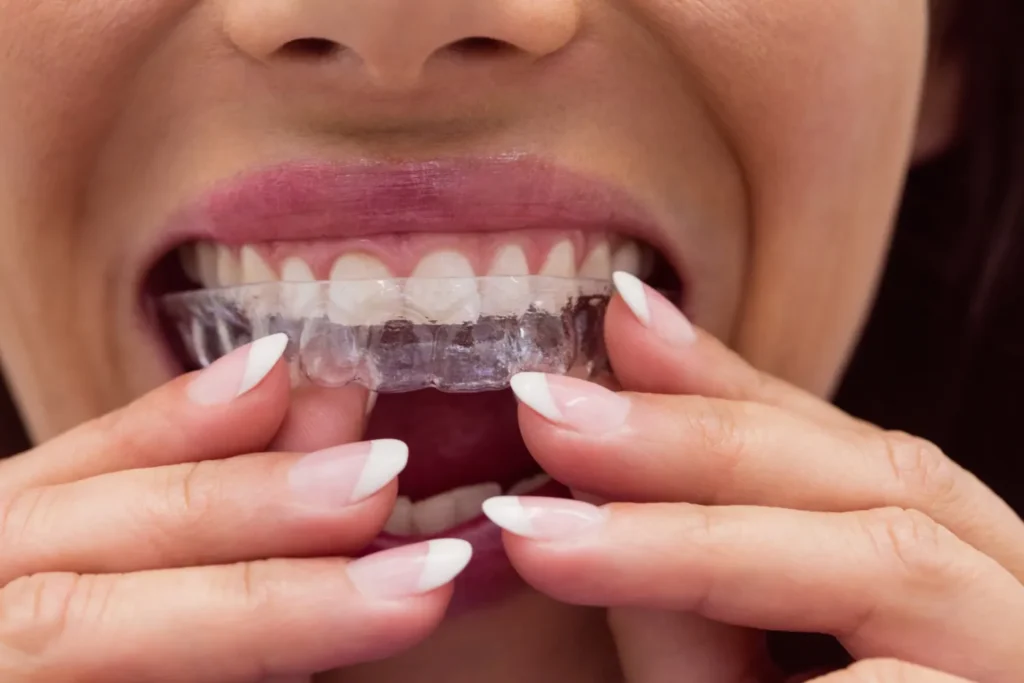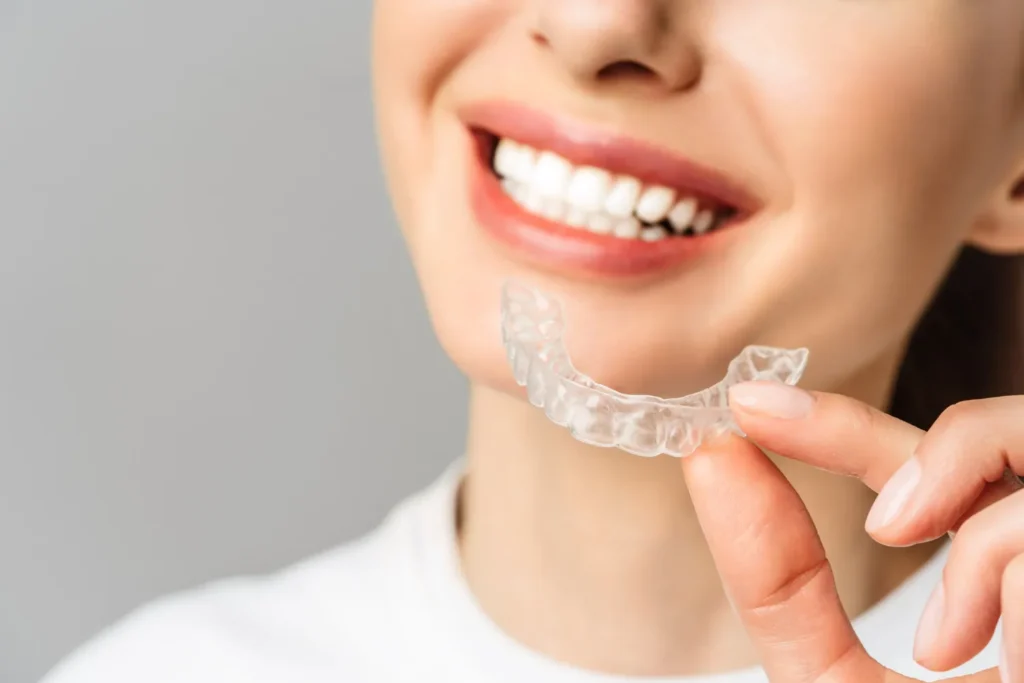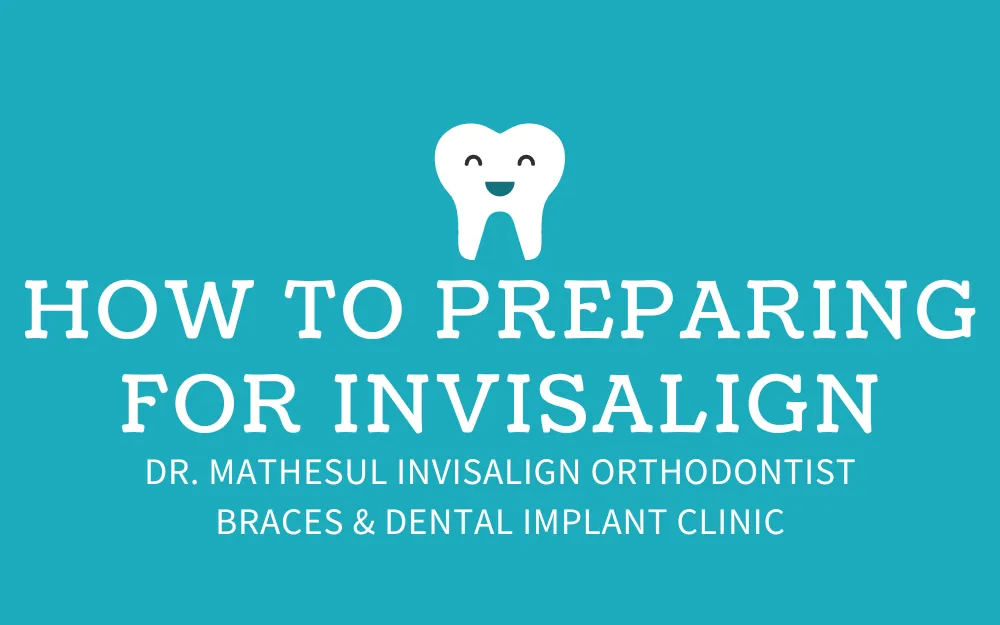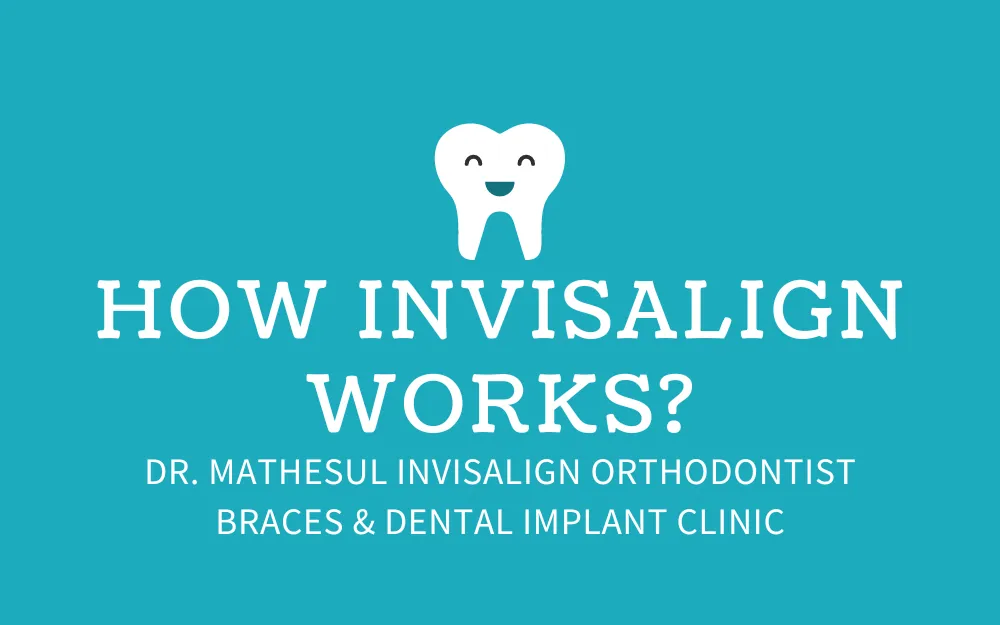Invisalign Myths Debunked: Think you know everything about Invisalign? Think again! This innovative treatment has transformed orthodontics, but a cloud of myths and misconceptions also surrounds it. If you’ve ever wondered whether Invisalign can handle complex cases or if it’s only for adults, you’re not alone. Many people need clarification about the effectiveness, cost, and comfort of these popular clear aligners.
In this guide, we’re diving deep to debunk the most common Invisalign myths and reveal the truth behind the treatment. From concerns about hygiene and treatment duration to questions about suitability for kids, we’ve got all the answers you need. Get ready to separate fact from fiction and discover why Invisalign might be the perfect solution for your orthodontic needs. Let’s get started!
Table of Contents
Toggle1. All Clear Aligners Are the Same

Myth: All clear aligners are identical, and there is no difference between Invisalign and other brands.
Reality: Invisalign stands out due to its proprietary SmartTrack material, which ensures a precise and comfortable fit. Additionally, Invisalign uses advanced 3D imaging technology and digital impressions to create customized aligners that effectively address your specific orthodontic needs. Other brands may offer different levels of precision or customization, leading to less effective treatment outcomes.
The Science Behind Invisalign
Invisalign aligners are made from a patented thermoplastic material called SmartTrack, designed specifically for the Invisalign system. This material allows for better control over tooth movements compared to other clear aligners. Moreover, Invisalign’s comprehensive digital planning process, which includes digital impressions, ensures that each aligner is perfectly tailored to fit your teeth and move them in a controlled and efficient manner.
2. Only Simple Malocclusions Can Be Corrected
Myth: Invisalign is only effective for simple cases of crooked teeth and cannot handle complex orthodontic issues.
Reality: Invisalign has evolved significantly since its inception and can now address a wide range of orthodontic problems, including complex malocclusions. Whether you have crowded teeth, gaps, overbites, underbites, or crossbites, Invisalign can be a viable treatment option. The treatment process is meticulously planned using advanced software to ensure effective results for various dental issues.
Complex Cases and Invisalign
Orthodontists who are experienced with Invisalign can treat even complex cases by using attachments, precision cuts, and elastics in combination with the aligners. These additional components enhance the aligners’ ability to move teeth in more complex ways, providing a comprehensive solution that rivals traditional braces.
3. Invisalign Does Not Require the Same Attention to Hygiene as Braces
Myth: Since Invisalign aligners are removable, you don’t need to worry as much about oral hygiene compared to traditional braces.
Reality: Maintaining good oral hygiene is crucial with Invisalign treatment, perhaps even more so than with braces. While the aligners are removable, you must brush and floss your teeth after every meal before reinserting them to prevent food particles from getting trapped, which can lead to cavities and gum disease.
Hygiene Tips for Invisalign Users
- Brush and Floss Regularly: Ensure you brush and Floss after every meal to maintain oral hygiene.
- Clean Your Aligners: Rinse and brush your aligners with a soft toothbrush to keep them clear and free of bacteria.
- Avoid Staining Foods and Drinks: Avoid foods and beverages that can stain your aligners, such as coffee, tea, and red wine.
4. You Don’t Need to Wear Your Aligners 22 Hours a Day

Myth: It’s okay to wear your Invisalign aligners for less than the recommended 22 hours a day.
Reality: For Invisalign to be effective, you need to wear your aligners for at least 22 hours a day. Consistently wearing your aligners ensures that your teeth move according to the treatment plan. Failing to wear them for the recommended duration can prolong the treatment time and affect the final results.
Importance of Consistent Wear
The aligners are designed to apply constant, gentle pressure on your teeth to move them gradually into the desired position. Interrupting this pressure by not wearing the aligners as directed can lead to setbacks in your treatment. Adhere to the 22-hour wear guideline to achieve the best results within the shortest time.
5. Any Dentist Can Treat with Invisalign
Myth: Any dentist can provide Invisalign treatment.
Reality: While many dentists offer Invisalign treatment, it’s essential to seek treatment from a qualified and experienced orthodontist. Orthodontists undergo additional training in the alignment of teeth and jaws, making them more adept at handling complex cases. At Dr. Mathesul Invisalign Orthodontist Braces & Dental Implant Clinic, we have extensive experience and training in providing Invisalign treatment.
The Role of an Orthodontist in Invisalign Treatment
Orthodontists are specialists in diagnosing, preventing, and treating dental and facial irregularities. They use their expertise to develop a customized treatment plan tailored to your specific needs. Choosing an experienced orthodontist for your Invisalign treatment ensures that you receive the best possible care and achieve optimal results.
6. Invisalign Is Not for Children
Myth: Invisalign is only suitable for adults and cannot be used for children or teenagers.
Reality: Invisalign has developed specific aligners designed for children and teenagers, known as Invisalign First and Invisalign Teen. These aligners address the unique orthodontic needs of younger patients, such as growing jaws and changing teeth. With the right guidance and supervision, Invisalign can be an effective treatment option for children and teenagers.
Benefits for Younger Patients
- Custom Fit: Invisalign aligners for children and teenagers are designed to accommodate growing mouths.
- Compliance Indicators: Some Invisalign aligners come with blue compliance indicators that fade over time, helping parents and orthodontists monitor wear time.
- Comfort and Convenience: Younger patients can remove the aligners for sports, playing musical instruments, and other activities, making Invisalign a versatile option for an active lifestyle.
7. Invisalign Treatment Is Shorter Than Braces

Myth: Invisalign treatment is always shorter than traditional braces.
Reality: The duration of Invisalign treatment varies depending on the complexity of each case, just like with traditional braces. While some patients may complete their Invisalign treatment faster, others with more complex orthodontic issues may require a longer treatment time. It’s essential to have a thorough consultation with an experienced orthodontist to understand the expected duration of your specific treatment plan.
Factors Influencing Treatment Duration
Several factors can affect the length of your Invisalign treatment, including the severity of your malocclusion, the number of aligners needed, and your adherence to wearing the aligners for the recommended 22 hours a day. In many cases, Invisalign treatment can be comparable to or even shorter than traditional braces when patients follow their treatment plan diligently.
8. Invisalign Is Painful
Myth: Invisalign treatment is painful and uncomfortable.
Reality: While some discomfort is expected when starting any orthodontic treatment, Invisalign aligners are generally more comfortable than traditional braces. The initial discomfort is a sign that the aligners are working to move your teeth. However, it typically subsides within a few days. Invisalign aligners are made from smooth, BPA-free plastic that won’t irritate your cheeks and gums like metal braces can.
Managing Discomfort
- Over-the-Counter Pain Relievers: If you experience discomfort, taking over-the-counter pain relievers can help alleviate any soreness.
- Soft Foods: Eating soft foods during the first few days of wearing a new set of aligners can also help reduce discomfort.
- Regular Wear: Consistently wearing your aligners as directed will help your teeth adjust more quickly, minimizing discomfort over time.
9. Invisalign Is More Expensive Than Braces
Myth: Invisalign treatment is always more expensive than traditional braces.
Reality: The cost of Invisalign treatment can be comparable to or even less than the cost of traditional braces, depending on the complexity of the case and the duration of treatment. Factors such as the geographic location, the orthodontist’s experience, and the specific needs of the patient can influence the overall cost. At Dr. Mathesul Invisalign Orthodontist Braces & Dental Implant Clinic, we offer competitive pricing and flexible payment plans to make Invisalign treatment accessible to our patients.
Cost Considerations
- Insurance Coverage: Many dental insurance plans cover Invisalign treatment, similar to how they cover traditional braces.
- Payment Plans: Flexible financing options can help manage the cost of Invisalign treatment.
- Value for Money: The convenience, aesthetics, and comfort of Invisalign often make it a worthwhile investment for many patients.
10. You Can’t Eat Certain Foods with Invisalign
Myth: You need to avoid certain foods while undergoing Invisalign treatment, similar to traditional braces.
Reality: One significant advantage of Invisalign is that the aligners are removable, allowing you to enjoy your favorite foods without restrictions. Unlike traditional braces, which hard or sticky foods can damage, Invisalign aligners can be taken out during meals, so you can eat whatever you like.
Eating and Drinking with Invisalign
- Remove Aligners When Eating: Always remove your aligners before eating to avoid damaging them and to maintain proper oral hygiene.
- Clean Your Teeth and Aligners: Brush and floss your teeth after eating before reinserting your aligners to prevent food particles from getting trapped.
- Stay Hydrated: Drink plenty of water while wearing your aligners to keep your mouth clean and avoid staining the aligners.
By debunking these Invisalign myths, we hope to provide clarity and confidence for those considering Invisalign treatment. If you have any further questions or would like to schedule a consultation, please contact Dr. Mathesul, Invisalign Orthodontist Braces & Dental Implant Clinic, at 8983101099 or info@dentist-pune.com.
FAQs About Invisalign Myths Debunked
What Is the Biggest Complaint with Invisalign?
The biggest complaint with Invisalign often revolves around the initial discomfort and the need for discipline in wearing the aligners for the recommended 22 hours a day. Some patients also find it inconvenient to remove the aligners before eating or drinking anything other than water. However, these issues are typically minor and can be managed with proper guidance and a little adjustment time. The benefits of a nearly invisible, comfortable, and effective treatment often outweigh these initial inconveniences.
What Do They Not Tell You About Invisalign?
One aspect that is only sometimes highlighted is the potential for slight lisping during the first few days of wearing new aligners. This is temporary and usually resolves as your tongue adjusts to the aligners. Another point often overlooked is that you will need to clean your aligners regularly to maintain oral hygiene and avoid staining. However, these are minor issues compared to the overall effectiveness and convenience of Invisalign.
What Are the Negatives About Invisalign?
While Invisalign has many benefits, there are some drawbacks to consider:
- Discipline Required: You need to be diligent about wearing the aligners for 22 hours a day and removing them before eating or drinking anything other than water.
- Initial Discomfort: Some initial discomfort or pressure is expected as your teeth begin to move.
- Cleaning: You must clean your aligners regularly to avoid staining and maintain oral hygiene.
- Cost: Depending on the complexity of your case, Invisalign can be more expensive than traditional braces. However, this is only sometimes the case.
What Is the Lawsuit Against Invisalign?
There have been lawsuits involving Invisalign, primarily related to patent disputes and competitive practices in the orthodontic industry. These legal issues generally do not impact the effectiveness or safety of Invisalign treatment for patients. It’s essential to focus on the clinical benefits and advancements that Invisalign offers rather than the corporate legal battles.
What Are the Common Misconceptions About Invisalign Treatment?
Several common misconceptions about Invisalign include:
- Invisalign is only for minor corrections.
- Invisalign is more expensive than traditional braces.
- Invisalign treatment is shorter than braces.
- Invisalign is painful.
- Any dentist can provide Invisalign treatment.
By understanding and debunking these misconceptions, patients can make more informed decisions about their orthodontic care.
How Long Does Invisalign Treatment Usually Take?
The duration of Invisalign treatment varies based on the complexity of the case. For mild to moderate cases, treatment can take as little as 6 months to a year. More complex cases may require 18 months or longer. On average, Invisalign treatment typically ranges from 12 to 18 months. It’s essential to follow your orthodontist’s guidance and wear the aligners as prescribed to ensure timely progress.
Can Invisalign Fix Severe Teeth Alignment Issues?
Yes, Invisalign can address severe teeth alignment issues. However, it depends on the specific case and the expertise of the orthodontist. Advanced techniques and additional components, such as attachments and elastics, can enhance the effectiveness of Invisalign for complex cases. Consulting with an experienced orthodontist like those at Dr. Mathesul Invisalign Orthodontist Braces & Dental Implant Clinic can help determine if Invisalign is suitable for your needs.
By debunking these Invisalign myths and addressing common FAQs, we hope to provide clarity and confidence for those considering Invisalign treatment. If you have any further questions or would like to schedule a consultation, please get in touch with Dr. Mathesul Invisalign Orthodontist Braces & Dental Implant Clinic at 8983101099 or info@dentist-pune.com.





